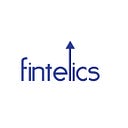Member-only story
HOW TO TRADE NON-FUNGIBLE TOKENS (NFTs)
If you’ve been following the tech headlines recently, you’ve likely come across terms like bitcoin, blockchain, and, more recently, NFTs. Artists and collectors alike have been drawn to stories of multi-million-dollar auctions for digital assets. But what exactly are NFTs? And how do they function?
We’ll look at the fundamentals of non-fungible tokens, the technology that underpins them, and how they’re used in everyday life.
What is a Non-Fungible Token?
The term “non-fungible token” refers to a token that is not fungible. That probably doesn’t imply anything at this point; the word “fungible” isn’t used all that much. It does, however, imply that anything is interchangeable.
Money, for example, is a fungible asset in economics. It is divided into units and can be readily swapped (for example, a $20 for two $10s) without losing or gaining value. Gold, cryptocurrencies, and stocks are all examples of fungible assets.
A non-fungible asset, on the other hand, is a unique item, such as a painting, a home, or a trading card. Even if an artwork can be replicated or photographed, it will not hold the same value as the original piece.
